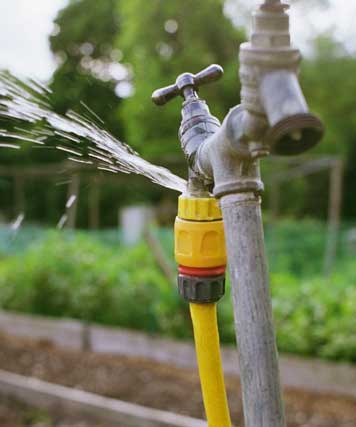Just how to Inspect If Your House Has a Covert Leak
Just how to Inspect If Your House Has a Covert Leak
Blog Article
Just how do you actually feel when it comes to Detecting hidden plumbing leaks?

Early discovery of leaking water lines can alleviate a potential calamity. Some tiny water leakages might not be noticeable.
1. Analyze the Water Meter
Inspecting it is a guaranteed method that assists you uncover leaks. If it moves, that suggests a fast-moving leak. This indicates you might have a sluggish leakage that can also be below ground.
2. Inspect Water Usage
Analyze your water costs and also track your water usage. As the one paying it, you ought to discover if there are any type of inconsistencies. If you identify sudden changes, in spite of your usage being the same, it implies that you have leaks in your plumbing system. Remember, your water bill should drop under the very same array every month. An abrupt spike in your bill indicates a fast-moving leakage.
A stable rise every month, even with the same behaviors, reveals you have a slow leakage that's likewise slowly rising. Call a plumber to completely check your home, especially if you really feel a warm area on your flooring with piping beneath.
3. Do a Food Coloring Test
When it comes to water consumption, 30% comes from commodes. If the shade in some way infiltrates your dish during that time without flushing, there's a leakage between the storage tank and also bowl.
4. Asses Outside Lines
Do not forget to inspect your outdoor water lines as well. Test spigots by affixing a garden hose pipe. Needs to water seep out of the connection, you have a loosened rubber gasket. Change this and also guarantee all connections are limited. It will aid obtain it properly examined as well as preserved each year if you have actually got a sprinkler system. One small leak can lose lots of water and also increase your water costs.
5. Evaluate and also Assess the Scenario
Homeowners ought to make it a practice to check under the sink counters and even inside closets for any kind of bad odor or mold and mildew growth. These two red flags indicate a leak so punctual focus is called for. Doing regular assessments, even bi-annually, can save you from a significant trouble.
If you understand your house is already old, maintain a careful eye on your heaters, hoses, pipelines etc. Check for stainings as well as compromising as many pipes and also home appliances have a life expectancy. They will additionally normally degrade because of tear and also use. If you suspect dripping water lines in your plumbing system, don't wait for it to intensify. Call an expert plumber right away so you do not wind up with an awful mess in your home.
Early discovery of leaking water lines can minimize a prospective calamity. Some small water leakages may not be noticeable. Checking it is a guaranteed means that assists you uncover leaks. One small leakage can squander tons of water as well as increase your water bill.
If you believe leaking water lines in your plumbing system, do not wait for it to intensify.
WARNING SIGNS OF WATER LEAKAGE BEHIND THE WALL
PERSISTENT MUSTY ODORS
As water slowly drips from a leaky pipe inside the wall, flooring and sheetrock stay damp and develop an odor similar to wet cardboard. It generates a musty smell that can help you find hidden leaks.
MOLD IN UNUSUAL AREAS
Mold usually grows in wet areas like kitchens, baths and laundry rooms. If you spot the stuff on walls or baseboards in other rooms of the house, it’s a good indicator of undetected water leaks.
STAINS THAT GROW
When mold thrives around a leaky pipe, it sometimes takes hold on the inside surface of the affected wall. A growing stain on otherwise clean sheetrock is often your sign of a hidden plumbing problem.
PEELING OR BUBBLING WALLPAPER / PAINT
This clue is easy to miss in rooms that don’t get much use. When you see wallpaper separating along seams or paint bubbling or flaking off the wall, blame sheetrock that stays wet because of an undetected leak.
BUCKLED CEILINGS AND STAINED FLOORS
If ceilings or floors in bathrooms, kitchens or laundry areas develop structural problems, don’t rule out constant damp inside the walls. Wet sheetrock can affect adjacent framing, flooring and ceilings.
https://www.servicemasterbyzaba.com/blog/how-to-detect-water-leakage-in-walls/

Hopefully you enjoyed reading our part about Leaking water lines. Thank you for spending some time to browse our piece. In case you appreciated our article kindly make sure you remember to pass it around. Thanks so much for going through it.
Report this page